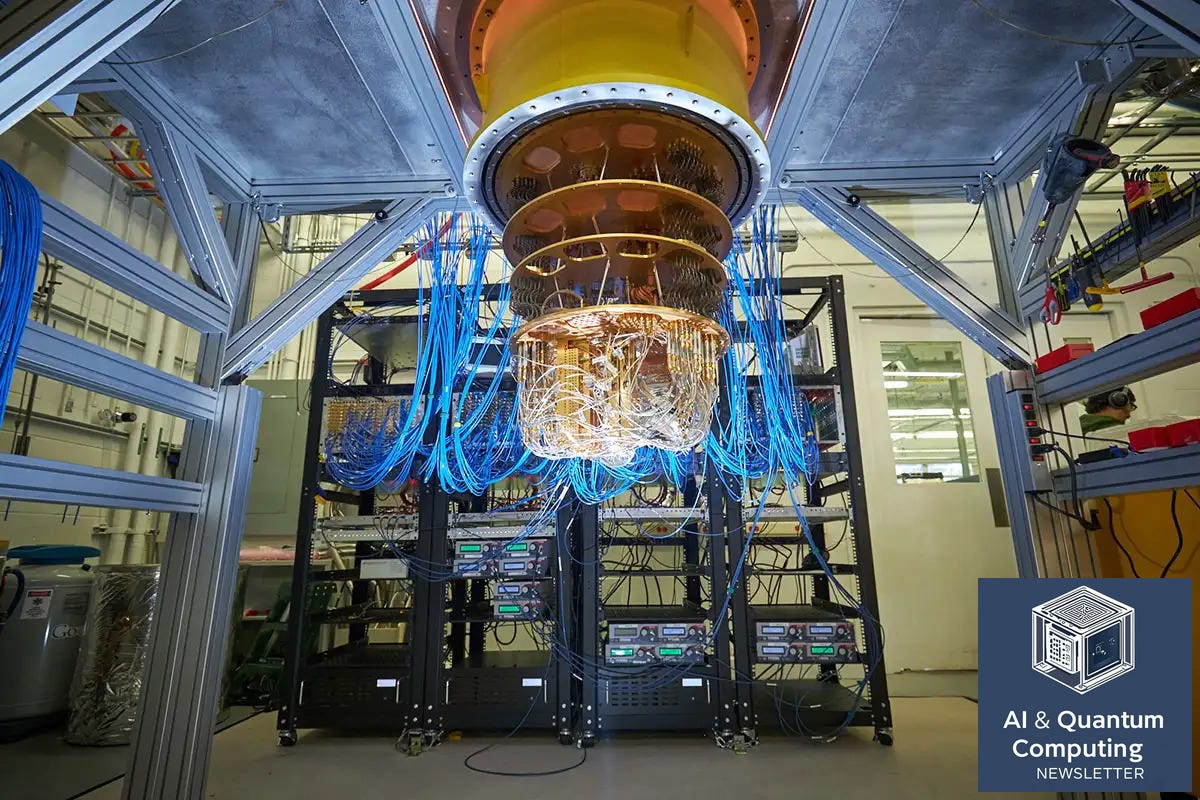A Quick Look Back at the History of Quantum Computers.
From Max Planck in 1900 to Microsoft in 2025.
With announcements in the field of quantum computing continuing to multiply in recent months, whether from Google, IBM, or Microsoft, I think it's interesting to look back at the first steps in the quantum world that have brought us to where we are today. It all started in 1900, as you will see, with Max Planck.
1900: Max Planck describes what would become Max Planck's quantum theory. Max Planck published his theory that energy comes in discrete packets known as quanta. This means that energy can only be transferred in quantized amounts. This is one of the most important principles of Planck's quantum theory, and it applies to all forms of radiation.
1905: Albert Einstein explains the photoelectric effect and suggests that light consists of quantum particles or photons.
1924: Max Born uses the term quantum mechanics for the first time.
1925: Werner Heisenberg, Max Born, and Pascual Jordan formulate matrix mechanics, the first formulation of quantum mechanics.
1925-1927: Niels Bohr and Werner Heisenberg develop the Copenhagen interpretation, one of the earliest and most common interpretations of quantum mechanics.
1930: Paul Dirac publishes The Principles of Quantum Mechanics, a standard textbook on quantum theory.
1935: Albert Einstein, Boris Podolsky, and Nathan Rosen publish a paper highlighting the counterintuitive nature of quantum superposition and arguing that quantum mechanics is incomplete.
1935: Erwin Schrödinger develops a thought experiment involving a cat that is simultaneously dead and alive, and coins the term “quantum entanglement.”
1944: John von Neumann publishes Mathematical Foundations of Quantum Mechanics, a rigorous mathematical framework for quantum theory.
1957: Hugh Everett proposes the many-worlds interpretation of quantum mechanics, which suggests that every possible outcome of a quantum measurement occurs in a parallel universe.
1961: Rolf Landauer shows that erasing a bit of information dissipates a minimum amount of energy, known as Landauer’s principle.
1965: John Bell proves that quantum entanglement cannot be explained by any local hidden variable theory, known as Bell’s theorem.
1973: Alexander Holevo proves that n qubits cannot carry more than n classical bits of information, known as Holevo’s theorem or Holevo’s bound.
1980: Paul Benioff proposes a model of a quantum Turing machine, a theoretical device that can perform any computation using quantum mechanical principles.
1981: Richard Feynman suggests that simulating quantum systems would require a new type of computer based on quantum mechanics.
1982: David Deutsch generalizes Benioff’s model and proposes the concept of a universal quantum computer.
1984: Charles Bennett and Gilles Brassard developed a protocol for quantum key distribution, which allows two parties to securely exchange cryptographic keys using quantum states.
1985: David Deutsch and Richard Jozsa devised an algorithm that can solve a specific problem faster than any classical algorithm, known as the Deutsch-Jozsa algorithm.
1991: Artur Ekert proposes another protocol for quantum key distribution based on quantum entanglement, known as the E91 protocol.
1992: David Deutsch and Richard Jozsa extend their algorithm to handle multiple inputs, known as the Deutsch-Jozsa algorithm.
1994: Peter Shor discovers an algorithm that can factor large numbers in polynomial time using a quantum computer, known as Shor’s algorithm.
1996: Lov Grover invents an algorithm that can search an unsorted database in square root time using a quantum computer, known as Grover’s algorithm.
1997: Isaac Chuang, Neil Gershenfeld, and Mark Kubinec demonstrate the first implementation of Shor’s algorithm using nuclear magnetic resonance (NMR) techniques.
2000: David DiVincenzo proposed five criteria for building a practical quantum computer, known as the DiVincenzo criteria.
2001: IBM researchers implement Grover’s algorithm using NMR techniques and achieve a modest speedup over classical algorithms.
2007: D-Wave Systems claims to have built the first commercial quantum computer, but its validity is disputed by many experts.
2019: Google announces that it has achieved quantum supremacy by performing a calculation on a 53-qubit quantum processor that would take a classical supercomputer thousands of years to complete.
2020: IBM demonstrates that its 65-qubit quantum processor can perform calculations beyond the reach of any classical computer.
2025: Microsoft announces Majorana 1. Majorana 1 is a revolutionary quantum chip powered by a topological core. This innovation is based on a new class of materials called topoconductors. Topoconductors enable stable, scalable qubits - the fundamental units of quantum computing.
A Historic Turning Point for Quantum Computing? IBM Announces That It Has Overcome the Biggest Obstacle to Large-Scale Quantum Computing.
For years, we have been promised that consumer quantum computers are just around the corner. But for 30 years, it has been the same story: the finish line keeps getting pushed back. This time, however, it seems that the finish line may not be so far away, if IBM is to be believed.


